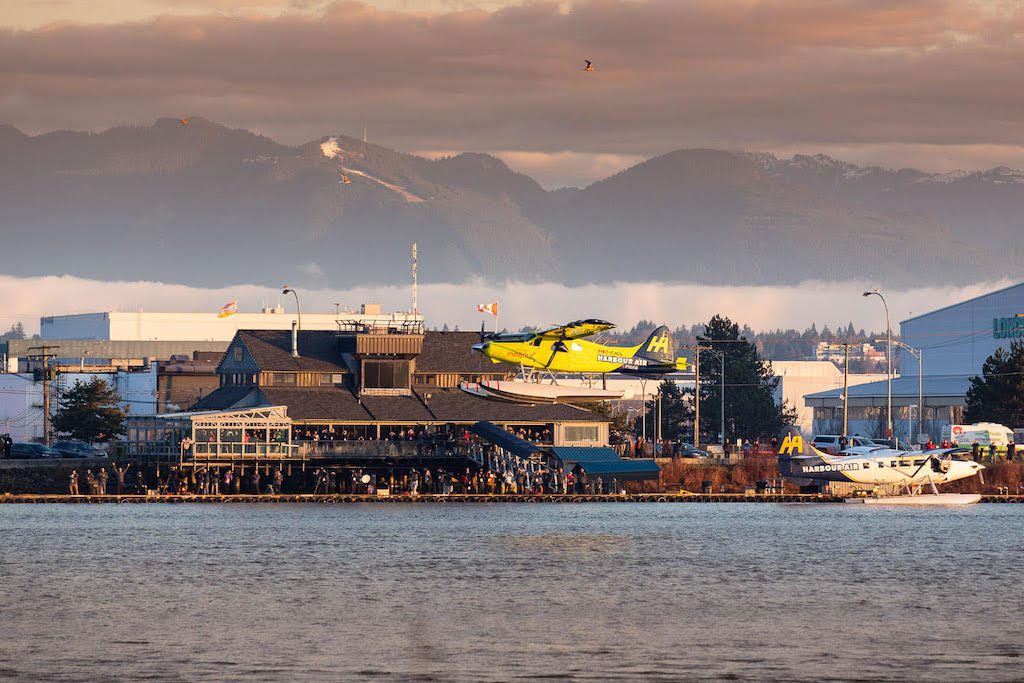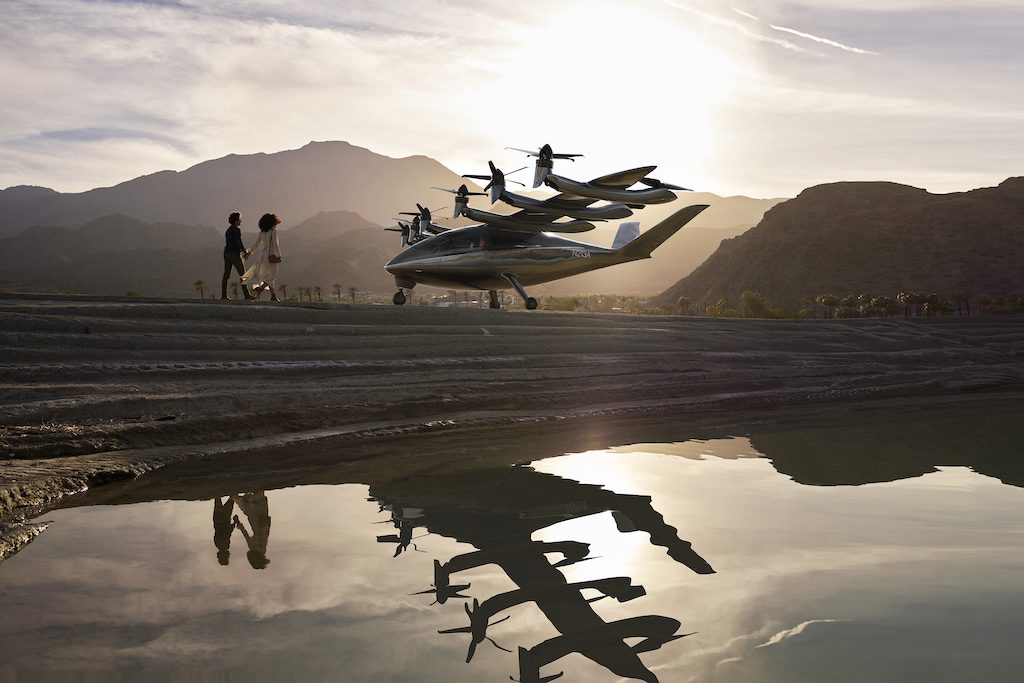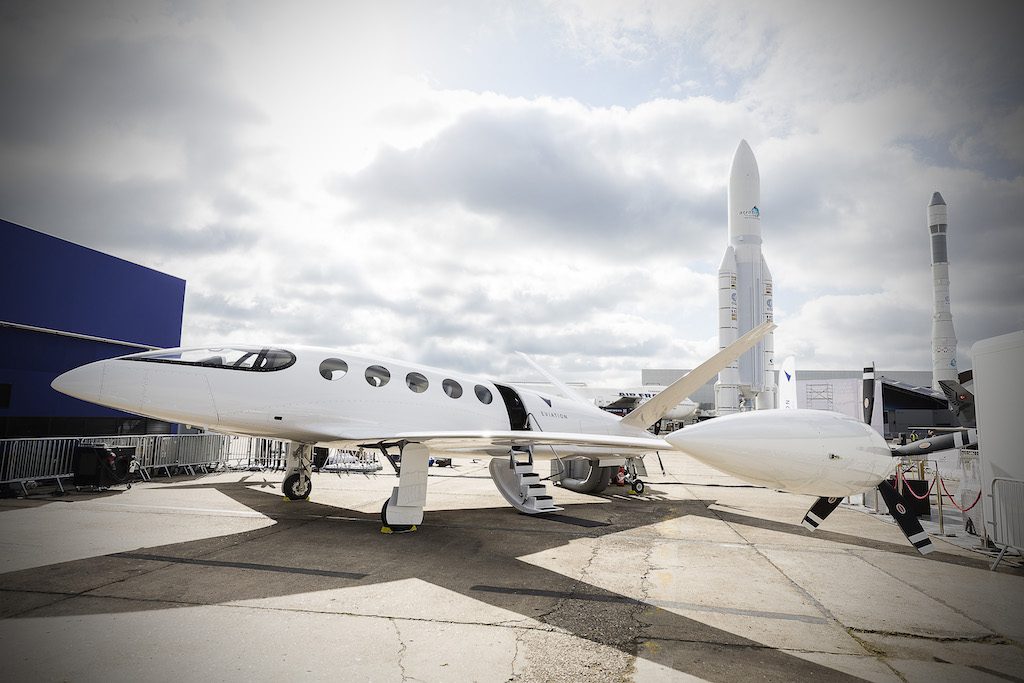Skift Take
Electric aircraft are an inevitable step for commercial aviation with the heightened focus on carbon emissions. Numerous companies are vying to develop this new technology but, with engines still in the works and a lengthy certification runway ahead, when is everyones' guess.
The march of progress is ceaseless, some say. Nowhere is that more true than aviation where technology has evolved dramatically since the first airline passengers boarded a KLM flight over a century ago.
Since just the beginning of the 21st century, the industry has seen the introduction of the first large composite aircraft, the Boeing 787, and ultra-long range twin-jets capable of connecting points as far apart as New York and Sydney nonstop have become de rigeur. And these feats have been accomplished more efficiently than any past airplane, with powerful, fuel sipping — at least compared to older models — engines.
“The technological advance that’s been done in the period of my career has been so huge — from flying aircraft built in World War II to flying jets,” Jonathan Ornstein, CEO of Mesa Air Group, told Skift. The regional carrier, which he joined for the first time in 1989, has evolved from an operator of primarily 19-seat props to an airline that operates 159 jets, including two Boeing 737 Freighters.
The next step, according to Ornstein? Electric planes, and he’s not alone.
Mesa joined United Airlines in what amounts to a memorandum of understanding for up to 200 electric vertical takeoff and landing aircraft, or eVTOLs, — helicopter-like planes — with Archer Aviation. The deal, while far from final, is the latest major commitment for the emerging field of electric-powered aircraft.
Going electric would solve one of the biggest issues that air travel faces in the 21st century: its carbon footprint. As efficient as airplane engines get, they continue to burn significant amounts of fossil fuel. Efforts are afoot to replace some of that fuel with renewable biofuels but, as of yet, no airline has been able to establish enough a scalable supply large enough to power a global operation. Other carriers offer carbon offsets and United has even gone as far as investing in a project to take harmful greenhouse gases directly out of the air.
This emerging field of electric aviation is much more than eVTOLs, no matter how much investors claim in their SPAC listings. Companies like MagniX are developing electric and hybrid-electric engines that could be retrofitted on existing aircraft. Eviation Aircraft unveiled its all-electric Alice with a commitment from regional operator Cape Air in 2019, however, first flight has been delayed more than a year after a battery fire early in 2020. And across the Atlantic in Italy, Tecnam has begun work on an all-electric version of its main commercial passenger plane using engines being developed by Rolls-Royce.
How Long Before Electric Planes Are Flying?
By the most optimistic measure, the first electric aircraft could be certified to carry passengers in just two years time, or by 2023. This is the goal of MagniX, which is developing a battery-powered electric propulsion system that could be retrofitted onto existing propeller planes. Harbour Air in Canada is already testing the system on one of its de Havilland Beaver seaplanes. MagniX’s also produces the engine for Eviation’s Alice.

But that is one of the more optimistic timelines. For example, Tecnam’s hydrocarbon-powered P2012 Traveller — the base for its all-electric plane — took three years from first flight in 2016 to FAA certification in 2019. Most think certification and introduction of the first electric engines for aircraft is unlikely before the middle of the decade. And for larger electric aircraft, like the thousands of Airbus A320s and 737s that ply the skies daily? Decades.
Electric motor technology exists, from ordinary desktop fans to Teslas, but no system is yet approved for aircraft engines. MagniX CEO Roei Ganzarski hopes Canadian regulators will approve the company’s electric propulsion system as soon as next year. After that, officials will then need to approve the use of that system with an engine on a specific aircraft, something that he estimates could take another year.
Regulators must evaluate everything from the safety of the batteries — the 787 was grounded for three months in 2013 after a battery fire — to avionics and back up systems before they sign off. There is little doubt that regulators will eventually do this but, as is well known, speed is not their forte.
U.S. Federal Aviation Administration spokesperson Crystal Essiaw told Skift that the regulatory framework allows for “flexibility to certify new technologies,” like electric engines. And in the case of eVTOLs, the regulator will assess everything from “design, production, airworthiness, and operation” before signing off.
Is The Technology Ready?
While regulatory hurdles are the main challenge to introducing electric aircraft, there is a technology problem. Specifically one with the batteries critical to powering them.
Jet fuel, according to various measures, is between 40-times and 50-times more powerful than the latest lithium ion battery technology. In other words, an electric plane would need 40-50 times more weight in batteries than Jet A to make the same flight. Battery technology is improving but not fast enough to replace fuel for most aircraft in the near future. Hence most of the electric aircraft work focuses on small planes — whether it’s the Beaver with MagniX engines that seats just six passengers or Tecnam’s P-VOLT with room for nine passengers. The general view is that these models can be brought to market relatively quickly with existing technology.

This energy density problem is the reason why some are focused on hybrid-electric technology. Like the Toyota Prius in the early 2000s, combining batteries with traditional internal combustion engines allows for significant fuel savings and as a bridge until battery technology progresses enough for large electric aircraft. Hybrid-electric engine developer Ampaire, which was recently acquired by Surf Air Mobility, estimates that its propulsion system could achieve 25-30 percent operational cost savings over existing fuel-powered engines.
Air Lease executive chairman, and aircraft leasing legend, Steven Udvar-Hazy also thinks hybrid-electric technology is the first step towards electrifying the skies. Hybrid technology could “augment the latest bypass turbofan engines to reduce the weight of the aircraft, and maybe that electric technology can be used as incremental thrust to reduce the trip fuel burn, maybe by 20 percent,” he said at the Skift Aviation Forum in November.
Longer term, there are also plans for hydrogen-powered planes. Airbus is leading the charge on this with a zero-emission concept aircraft that it hopes to introduce around 2035.
What is All The Fuss With eVTOLs?
One potential early electric aircraft could be the much talked about eVTOL. Multiple companies are racing to be first, from Archer with its partners Mesa and United, to Joby Aviation, which recently acquired Uber Elevate and counts JetBlue Technology Ventures among its supporters. There are billions of dollars flooding into the segment from tech firms who want to get in early on what could be the next big thing, raising the sectors prominence.
An eVTOL functions much like a helicopter: it takes off and lands vertically within the scope of existing helipads. However, unlike a helicopter it has short wings with multiple small rotors powered by electric engines that are both quieter (some claim a lot quieter) and create less vibration, thus require less maintenance. The craft will initially be able to carry just a few passengers — Archer’s eVTOL would seat just four flyers plus a pilot — over short distances, up to 60 miles again for Archer.
For urban mobility, these aircraft have great potential. Archer co-CEOs Brett Adcock and Adam Goldstein see the company’s crafts cruising up and down existing aerial corridors between, say, Los Angeles International Airport and helipads and small airports around the L.A. Basin in the future. The aircraft would be so cheap to operate that they could go without a schedule, departing nearly as soon as passengers show up.

But the nascent eVTOL industry faces the same challenges as standard electric planes. In addition to the need to certify an electric engine, no developer has yet presented a complete design to the FAA for sign off. That process will take years with many casting doubt on dates like Archer’s target of certification by 2024 and subsequently carrying paying passengers for United within a year.
“There’s going to be a lot of very pretty mock ups,” said The Air Current founder and editor in chief Jon Ostrower during a recent Clubhouse discussion on the sector. “We’re probably two- to three-years away from having a certified electric motor, to open the door for this. Until we can get off the ground, quite literally, some of this is an ethereal discussion.”
During the discussion, urban air mobility experts estimated that the first eVTOLs are likely at least five years away from certification and even further from being available at a scale where they can operate as envisioned by Archer and other companies.
“This is going to be crawl, walk, run,” said Robert Wiesenthal, founder and CEO of Blade Urban Air Mobility, during the Clubhouse session.
How Could Electric Planes Change Travel?
Urban mobility is just the beginning for electric aircraft. Aviation executives have grander plans for the technology that many see eVTOLs as introducing to the market. If the cost savings compared to existing engines are as promised, the technology could quickly be adapted to larger aircraft and reopen passenger air service to many small cities that lack flights around the world.
Ornstein mentioned Blythe, Calif., when he spoke of electric aircraft. The city about halfway between Los Angeles and Phoenix off Interstate 10 had air service for years, including on Air L.A. where Ornstein once worked. But flights ended decades ago and today, he said, the airport is nearly deserted with its terminal boarded up.
While electric planes will not necessarily make people want to fly to Blythe, they could make it economical for airlines to fly there if demand exists. Multiply that across all of the airports — and routes — that have lost flights in recent decades and the possibility exists to open up a new era of broad, economical and nearly carbon-free air travel.
And maybe in a decade or so, United can replace its new bus service to Fort Collins, Colo., with an electric plane — bringing the route full circle to the last flight that ended in 1997.
Have a confidential tip for Skift? Get in touch
Tags: Archer Aviation, eVTOL, mesa airlines, united airlines
Photo credit: Eviation's Alice aims to be one of the first electric planes certified by regulators. Jean-Marie Liot / Eviation Aircraft
